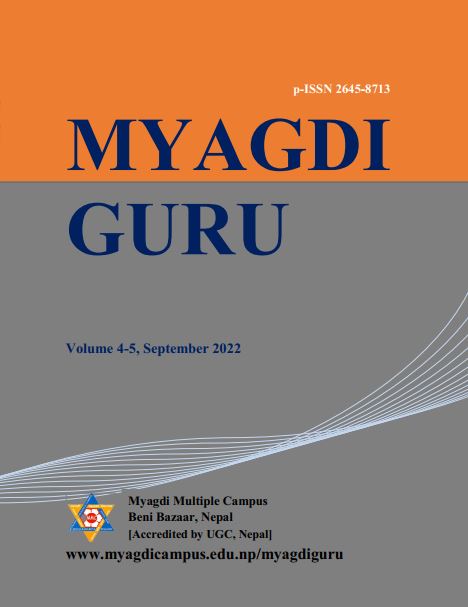Symbolical and Metaphorical Representation of People’s Movement and Quest for Peace in Dhakal’s “Mother and the Motherland”
DOI:
https://doi.org/10.3126/mg.v5i1.70623Keywords:
Democracy,, metaphor, People’s Movement, symbol, traumaAbstract
This article analyzes trauma in Narayan Dhakal’s “Mother and the Motherland” (Janani Janmabhumischha) by applying psychological aspects of trauma theory propagated by Cathy Caruth to study the symbolical references for the consequences of Second Movement (2006). But, it has tried to bring out the crucial facts of the Movement analyzing the symbolic and metaphoric aspects in the story. Trauma theory has been used to formalize the historical events which people after long span of time would have forgotten and the literary writing would be a testimony of this historical event. It has been used to focalize those events in the literary forms. The story as a piece of art has stood as a symbolical and metaphorical discourse to scrutinize the minor details that might have happened around two decades ago. Caruth’s classic form of trauma theory has been applied as a medium to pinpoint the painful experiences of a dutiful security person as well as to evaluate writing the past event as a testimony would resolve the issue or exasperate the situation further.
Downloads
Downloads
Published
How to Cite
Issue
Section
License

This work is licensed under a Creative Commons Attribution 4.0 International License.
This license enables reusers to distribute, remix, adapt, and build upon the material in any medium or format, so long as attribution is given to the creator. The license allows for commercial use.




